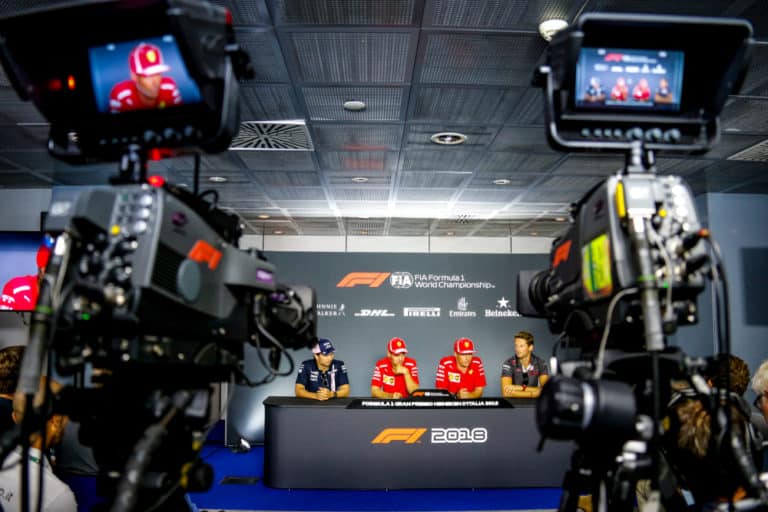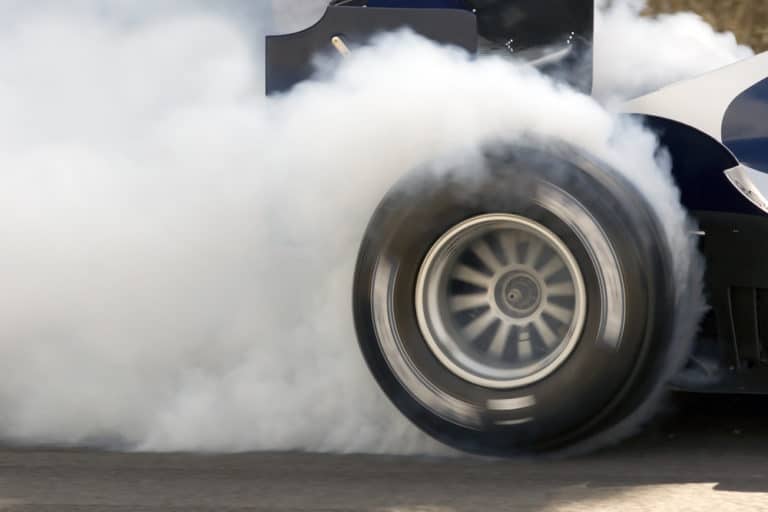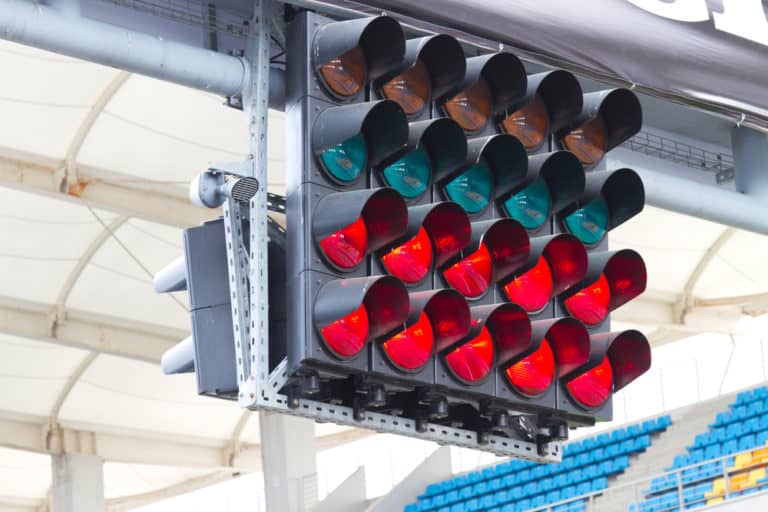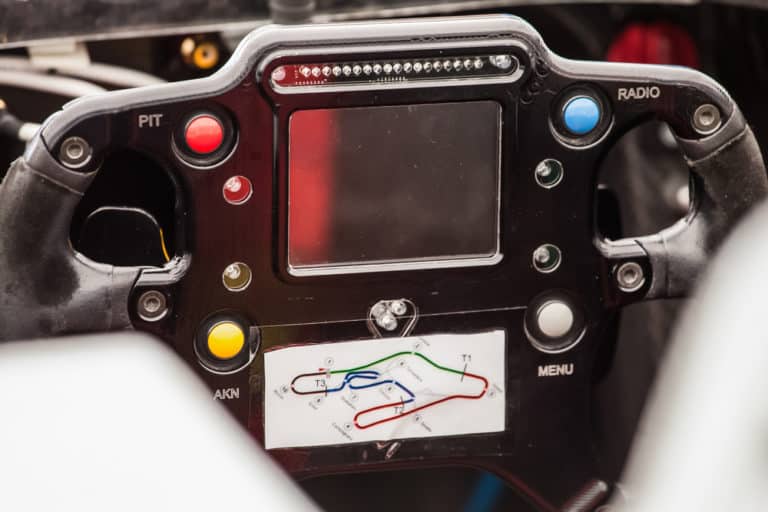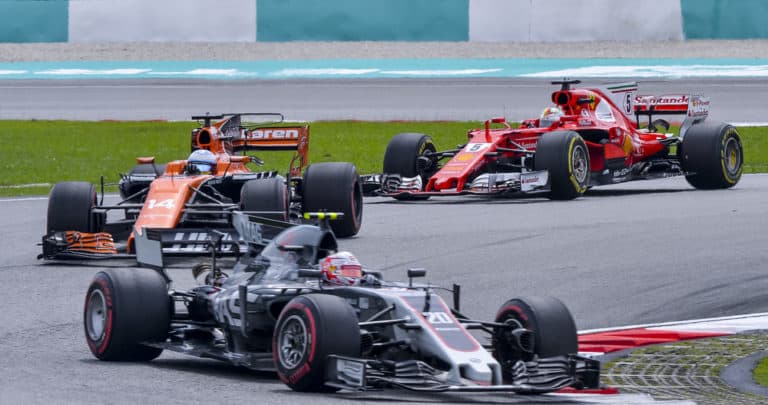Formula 1 is full of numbers; however, the ones that usually attract the most attention are those worn by each driver. When seeing them, many questions usually arise, such as if they are the ones who have chosen them or if they can keep their numbers. In this article, we will see everything related to drivers numbers.
Formula 1 drivers choose the number they want to race with when entering the category between #1 and #99 (as long as no other driver uses it). They can keep this number until they retire, at which point that number is “reserved” for two years in case the driver returns to racing.
F1 driver numbers have always been an interesting and curious topic that we will look at and discuss below, as it is not a well-known topic.
How Are Numbers Defined In F1?
Throughout history, there have been some changes in the regulation of the allocation of numbers in F1. The rule of running the same number race after race was first introduced in 1974. The numbers were given to the teams based on the 1973 constructors’ championship and kept them for as long as they were in the sport.
However, these numbers were not entirely fixed. Each year, the team that had the driver that won the championship from the previous year was given #1 and #2, and their numbers were given to the team that previously owned them. Basically, an exchange of numbers.
The lower teams could also change their numbers if they retired from F1, but more commonly, they decided to stick with their previous numbers.
This system was changed in 1996, from when the numbers would be changed every year. The driver’s campion team would still take #1 and #2, and the constructor’s champions (if it was not the same) would take #3 and #4 and then work downwards.
This system was maintained until 2014, when the permanent number system was introduced, in which each driver chooses a number and keeps it for their entire career. This was done to create a hallmark and that the drivers can be more easily recognized by the fans, just like in MotoGP.
Are There Any Numbers That Cannot Be Chosen In F1?
From #1 to #99, there are only two numbers that cannot be chosen. The championship winner driver is the only one who can choose #1 for the following year, but can keep his number if he wants, just like the current multiple world champion, Lewis Hamilton, does, always keeping his number 44. For this reason, nobody has been racing with #1 since 2014.
The other number is 17, the only number retired from F1, in honor of Jules Bianchi, who died in 2014 while racing with that number.
Before 2014, #13 was not used and skipped directly from #12 to #14. The main reason was part of a tradition by simple superstition, as it is generally considered an unlucky number. In addition, there were some fatal accidents in competitions with this number during the 1920s.
This changed with the permanent number system, and for example, the driver Pastor Maldonado used it during 2014 and 2015.
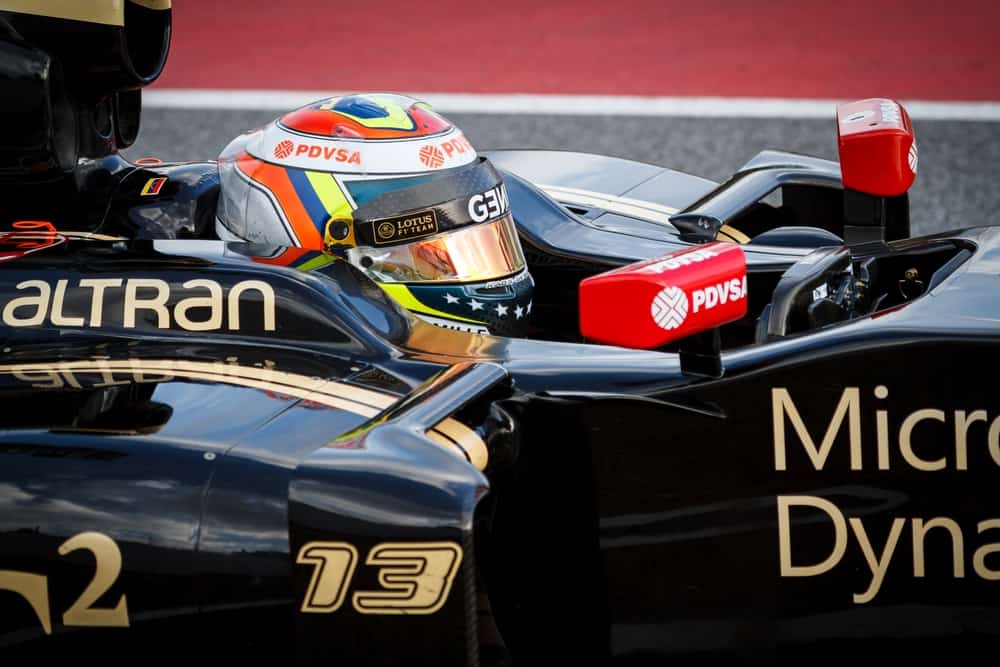
What Are The Numbers Of The 2021 F1 Drivers?
In the following table, we can see what number each driver has:
| Driver | Team | Race Number |
| Lewis Hamilton | Mercedes | 44 |
| Valtteri Bottas | Mercedes | 77 |
| Max Verstappen | Red Bull Racing | 33 |
| Sergio Perez | Red Bull Racing | 11 |
| Daniel Ricciardo | McLaren | 3 |
| Lando Norris | McLaren | 4 |
| Sebastian Vettel | Aston Martin | 5 |
| Lance Stroll | Aston Martin | 18 |
| Fernando Alonso | Alpine | 14 |
| Esteban Ocon | Alpine | 31 |
| Charles Leclerc | Ferrari | 16 |
| Carlos Sainz | Ferrari | 55 |
| Pierre Gasly | AlphaTauri | 10 |
| Yuki Tsunoda | AlphaTauri | 22 |
| Kimi Raikkonen | Alfa Romeo Racing | 7 |
| Antonio Giovinazzi | Alfa Romeo Racing | 99 |
| Mick Schumacher | Haas F1 Team | 47 |
| Nikita Mazepin | Haas F1 Team | 9 |
| George Russell | Williams | 63 |
| Nicholas Latifi | Williams | 6 |
Why Did 2021’s F1 Drivers Pick Their Race Number?
Below we leave an explanation of why drivers have chosen to wear their numbers. Some stories are more interesting than others:
- Lewis Hamilton (#44): It was the number that he put in his first kart because it was on the number plate of his father’s car.
- Valtteri Bottas (#77): Initially wanted #7 but was taken by Raikkonen, so took #77. This number also matches his name: Val77eri Bo77as.
- Max Verstappen (#33): His favorite number is 3, but it was taken by Ricciardo, so he just added another 3.
- Sergio Perez (#11): It was the number that his idol, the footballer Ivan Zamorano used and picked it since go-karting.
- Daniel Ricciardo (#3): It was the number that the first kart they gave him had and because it is the number his idol, Nascar driver Dale Earnhardt, used.
- Lando Norris (#4): He initially wanted #11 and #31 but were taken. So he finally took #4 because it fits nicely with his logo.
- Sebastian Vettel (#5): It was the number he had on his kart during a successful year in 2001 and also because his idol, F1 world champion Nigel Mansell, used it.
- Lance Stroll (#18): The number he used when he won F4 and F3.
- Fernando Alonso (#14): Became world karting champion at 14 years old on 14 July with kart number 14.
- Esteban Ocon (#31): He had the number in 2007 when he won the French Karting Championship.
- Charles Leclerc (#16): Initially wanted #7 and #10 but were taken, so he finally took #16 because 1+6 is 7 and his birthday.
- Carlos Sainz (#55): Initially wanted #5 but was taken by Vettel, so he just added another 5, and it also matches his name: Carlo5 5ainz.
- Pierre Gasly (#10): The number he had in 2013 when he won the European Formula Renault 2.0 Championship. Also, because of his idol Zinedine Zidane.
- Yuki Tsunoda (#22): Initially wanted #11 because of his first go-karting number but was taken by Perez, so he decided to multiply it by 2.
- Kimi Raikkonen (#7): No particular reason. Initially wanted #6 but knew that Nico Rosberg wanted it because of his father, so he decided to let him have it instead.
- Antonio Giovinazzi (#99): The number he used when he got his first victory in the go-karting Italian championship in 2006.
- Mick Schumacher (#47): Liked both #4 and #7. #4 was the number he raced with when he won the F3 championship and #7 because of his father, 7-time World Champion Michael Schumacher.
- Nikita Mazepin (#9): Initially wanted #99 because of his birth but was taken by Giovinazzi.
- George Russell (#63): It was his brother’s go-karting number.
- Nicholas Latifi (#6): It represents his home city, Toronto.
Conclusion
Race numbers are part of the identity of each driver, as it is his hallmark during all his career and is used in his car and all his merchandising. Each driver develops a kind of connection with their number as time passes.
Thanks to changes in regulations since 2014, drivers can keep their number until they retire, something that both drivers and fans liked. Before, it was more difficult to identify a driver by his number since it used to be different each year.

